Upgrading memory of a PcW 9256
This Joyce comes with a standard memory of 256kb, and like the first model in the range, the PCW 8256, it can be upgraded to 512kb on the computer's main board. Do consult the pages on upgrading the PCW 8256 as well: they contain the general details on upgrading and precautions that should be taken.
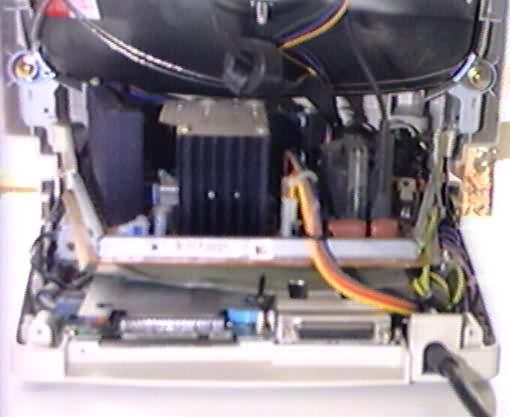
The PcW 9256 is narrower than its older brother is: besides the smaller monitor the disc drive(s) and the main board are located below the monitor, whereas with an 8256/8512 only the power supply resides under the monitor. The 8000 series looks rather big and bulky when compared to the PcW 9256.
The PcW 9256 and the PcW 10 owe their elegant look from the change in design by Amstrad. But upgrading it is a more difficult task than with the 8000's. The photograph shows the internals, after the plastic (back) cover has been removed (4 screws).
The main parts are the power supply (directly below the monitor) and the computer's main board below the power supply.
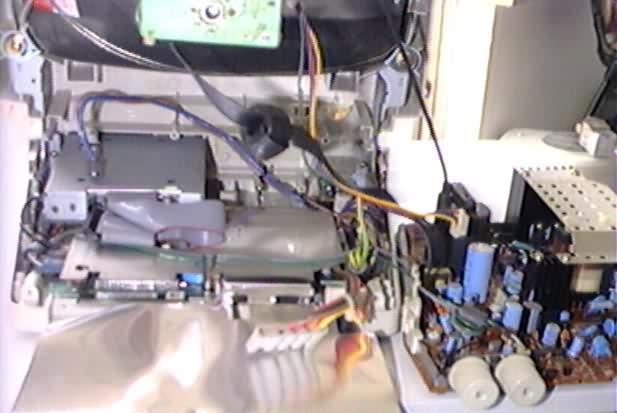
After the power supply has been removed (as shown on the right) it can be seen that the computers main board is shielded by both a foil (folded backwards towards the front of the photo) and a metal shield, still fitted, on the main board.
Removing all components is a tedious task with dozens of screws of different type. The PcW 9256 is not the type of machine to be disassembled without taking some precautions: do note the number and location of the components so you can put it back together the way it was!
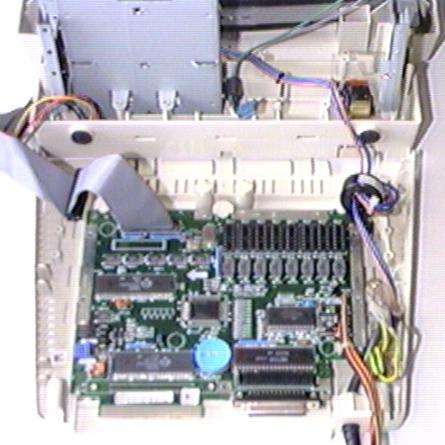
Disassembly completed: the metal shield has been removed and the bottom plate of the PcW has been disconnected from the housing of the Joyce. It is hardly surprising to see that the main board differs from an 8000 one. It is about 2/3 of the size of an 8000 main board: the size can be measured from the 3.5" disc drive on the top right corner. Besides the size the board also has a different lay-out entirely.
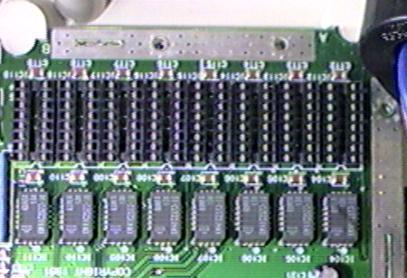
A view on the memory section shows that it uses different memory chips, welded to the main board instead of fitted into sockets. Moreover: it is of an access speed of 100 nanoseconds, rather than the 150ns as mounted in the 8256/8512. Rumour has it that, at the time of production the original chips were no longer available in commercially attractive quantities.
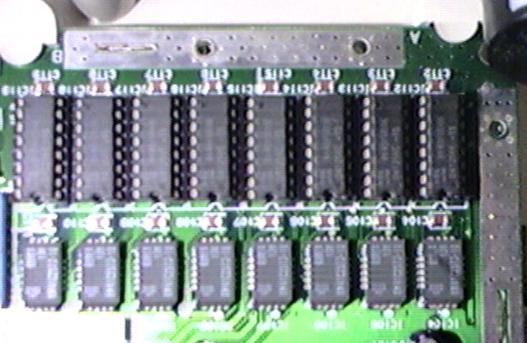
Fortunately, the 8 expansion sockets are of the same type as used in the 8256 and they accept the original 150ns chips as well. In fact, I used the IC's of a cannibalised 8512 (the disc drive and FDC cable were connected to a PC, the printer was donated and the remainder of the parts are in storage).
The way to handle the chips does not differ from the instructions as presented with the 8256 model, but for one detail: see below.

Instead of a block of 4 dip switches, as used in the 8256 (or welded wires as in early models), the PcW 9256 has one single jumper on the main board. Remove the jumper to set it to 512kb: also in print on the main board.
Easier than upgrading the 8256, except for the tight fittings, dozens of screws and cramped space. However, you will do this only once, I guess, so I consider this acceptable…
After re-assembling the PcW reports the increased memory size automatically: 368kb drive M. You can test it by means of special testing software, a file copy program with a verify option (not being DISCKIT). Alternatively you can fill drive M: to capacity with LocoScript documents and check the contents: if no errors occur you may assume that there are none....